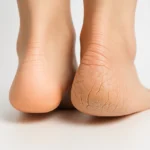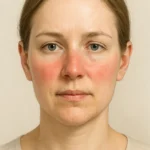
When Hoarseness Won’t Go Away: What Persistent Voice Loss Means
Loss of voice, often described as hoarseness, occurs when the vocal cords become inflamed, irritated, or strained and can no longer vibrate properly to produce sound. It is a common condition that affects people of all ages and is usually temporary, often following a viral infection, excessive talking, or exposure to irritants such as smoke. While most cases improve within a few weeks with rest and hydration, persistent or severe voice loss can indicate an underlying condition such as reflux, nerve injury, or vocal cord paralysis. This guide outlines the common causes, symptoms, treatments, and when to seek medical evaluation for ongoing or severe loss of voice.
How Voice Loss Affects the Vocal Cords
Loss of voice, also known as dysphonia, happens when the vocal cords in the larynx cannot move or vibrate normally to produce sound. The voice forms as air from the lungs passes through the cords, creating vibrations that are shaped by the throat, mouth, and nose. When these delicate tissues become swollen or irritated, they cannot close and vibrate evenly, leading to changes in pitch, tone, or even complete loss of voice.
Common Mechanisms
- Inflammation or infection: Viral or bacterial infections can cause laryngitis, making the vocal cords swollen and less flexible.
- Overuse or strain: Shouting, singing, or prolonged speaking can fatigue the vocal cords, resulting in a weak or rough sound.
- Nerve-related causes: Neurological conditions or injury can affect nerve control, leading to persistent or severe dysphonia.
Most short-term loss of voice resolves once inflammation or strain subsides. However, nerve-related problems often require evaluation by an ear, nose, and throat (ENT) specialist.
Key Point
Even minor irritation can temporarily silence the voice, but persistent or severe changes should be evaluated by a clinician. Protecting the vocal cords through rest, hydration, and gentle use supports healthy sound production and helps prevent long-term issues.
Causes and Risk Factors for Loss of Voice
Voice loss can develop from many causes, but most relate to inflammation, irritation, or strain affecting the vocal cords. These small bands of tissue in the larynx must open and close smoothly to produce sound. When they become swollen or overworked, vibration changes and the voice may sound hoarse, weak, or disappear completely.
Main Causes
- Infections and inflammation: Viral or bacterial infections-often linked to colds or respiratory illnesses-can make the cords swollen and less flexible, causing temporary hoarseness or loss of voice.
- Vocal overuse and strain: Shouting, singing, or extended talking without rest can fatigue the cords and cause irritation or swelling.
- Reflux and throat irritation: Gastroesophageal reflux may expose the throat to stomach acid, inflaming the cords and leading to chronic hoarseness or throat tightness.
- Environmental and lifestyle irritants: Cigarette smoke, pollutants, dry air, and allergens can irritate or dry the vocal cords, especially with frequent voice use.
Who Is at Higher Risk?
- People who use their voices heavily, such as teachers, singers, and coaches
- Individuals exposed to secondhand smoke or workplace irritants
- Those with unmanaged reflux or frequent respiratory infections
Most cases improve once inflammation or strain subsides, but persistent hoarseness or recurring irritation should be checked by a healthcare provider to prevent long-term vocal cord damage.
Symptoms and When to Seek Medical Help
Changes in the sound or strength of the voice are often the first signs of vocal cord irritation or strain. Hoarseness, a weak or breathy tone, or difficulty reaching higher or lower notes may occur when the cords cannot vibrate properly. Some people also find their voice tires easily or sounds rough after brief speaking.
Common Symptoms
- Hoarseness or a weak, breathy voice
- Loss of vocal range or quick voice fatigue
- Dry or sore throat and mild discomfort
- Frequent throat clearing or a persistent dry cough
These symptoms often appear after a cold, prolonged talking, or exposure to irritants like smoke. In most cases, they resolve within two to three weeks as inflammation subsides.
When to See a Healthcare Provider
- Voice changes lasting longer than two to three weeks
- Worsening hoarseness or voice loss over time
- Pain, difficulty breathing, or swallowing with voice changes
- Persistent hoarseness in children or older adults
These signs may suggest a more serious underlying problem. Early recognition and evaluation help prevent complications. With proper care, rest, and hydration, most people fully recover from temporary loss of voice.
Diagnosis and Medical Evaluation for Loss of Voice
When hoarseness or loss of voice does not improve after a short period of rest, healthcare professionals follow a structured process to identify the underlying cause. The goal of this evaluation is to determine whether the issue stems from irritation, inflammation, or a structural or neurological condition affecting the vocal cords.
Steps in the Diagnostic Process
- Medical history: The clinician reviews when symptoms began, their duration, recent illnesses, voice use patterns, and exposure to irritants such as smoke or allergens. They may also ask about additional symptoms like throat pain, swallowing difficulty, or breathing problems.
- Physical examination: The provider examines the head, neck, and throat for redness, swelling, or lesions. They listen to the voice to assess pitch, tone, and strength, helping determine whether inflammation, strain, or structural abnormalities are present.
- Laryngoscopy: A flexible or rigid scope with a light and camera is used to view the vocal cords directly. This allows visualization of cord movement and detection of nodules, growths, or irregularities on their surface.
- Specialist evaluation: If hoarseness lasts longer than two to three weeks or if findings suggest a more serious issue, an ear, nose, and throat (ENT) specialist may perform additional tests to rule out conditions such as vocal cord nodules, cysts, or tumors.
Why Early Evaluation Is Important
Persistent or unexplained hoarseness should always be assessed by a healthcare professional. Early diagnosis helps identify both common and uncommon causes of loss of voice and ensures prompt treatment to protect long-term vocal health.
Treatment, Recovery, and Prevention of Voice Loss
Most cases of loss of voice improve with self-care and simple treatments that allow the vocal cords to heal naturally. The first and most important step is voice rest. Reducing talking, avoiding whispering, and allowing the throat time to recover help decrease strain and inflammation. Hydration also plays a critical role-drinking water throughout the day keeps the vocal cords moist and flexible for smoother sound production.
Self-Care and Recovery Tips
- Rest the voice: Limit speech and avoid whispering to prevent further strain.
- Stay hydrated: Drink water regularly to keep vocal cords lubricated.
- Avoid irritants: Refrain from smoking, alcohol, and exposure to fumes or pollutants.
- Maintain humidity: Use a humidifier or stay in moist environments to reduce throat dryness.
Medical and Therapeutic Management
- Reflux management: For reflux-related voice loss, acid suppression therapy and lifestyle changes-such as eating smaller meals and avoiding lying down after eating-can reduce irritation.
- Speech and voice therapy: Chronic or recurrent hoarseness may benefit from therapy to improve vocal strength, breathing, and proper speaking techniques, especially for those who use their voice frequently in their profession.
Preventing Future Voice Problems
- Avoid yelling or prolonged voice strain.
- Take breaks during extended speaking or singing.
- Stay hydrated throughout the day.
- Manage reflux and avoid throat irritants.
- Keep indoor air comfortably humid.
With consistent care, rest, and healthy vocal habits, most people recover fully and can prevent future episodes of voice loss.
Frequently Asked Questions About Loss of Voice
Can loss of voice be caused by stress or anxiety?
Yes. Emotional stress and tension can sometimes contribute to temporary voice changes. Stress may lead to muscle tightness in the throat, affecting how the vocal cords move and vibrate. Relaxation techniques and gentle voice exercises can help restore normal function once medical causes are ruled out.
How long does it usually take for a lost voice to come back?
Most cases improve within one to three weeks, especially if caused by a viral infection or vocal strain. Resting the voice, staying hydrated, and avoiding irritants typically speed recovery. If symptoms persist beyond three weeks, an ENT specialist should evaluate the cause.
Is it harmful to whisper when you’ve lost your voice?
Yes, whispering can actually strain the vocal cords more than speaking softly. It increases tension in the larynx, which can delay healing. Instead, rest the voice as much as possible and communicate with short, gentle speech when necessary.
Can children or older adults experience loss of voice differently?
Children may lose their voice more easily due to frequent respiratory infections or shouting, while older adults can develop hoarseness from age-related vocal cord changes. Both groups should receive prompt medical evaluation if hoarseness is persistent or recurrent.
What lifestyle habits help prevent voice loss?
Stay hydrated, avoid smoking, and limit alcohol and caffeine, which can dry the throat. Using a humidifier, managing reflux, and resting the voice during illness also help prevent vocal irritation and strain.
When should I worry about persistent hoarseness?
Seek medical advice if hoarseness or loss of voice lasts longer than two to three weeks, worsens over time, or occurs with pain, difficulty swallowing, or breathing issues. Early evaluation helps detect conditions like vocal cord nodules, reflux-related inflammation, or nerve problems.
Can speech therapy really help with voice recovery?
Yes. Speech therapy can teach techniques that reduce strain, improve breath support, and strengthen the vocal cords. It’s especially helpful for people who rely on their voice professionally or have chronic voice disorders.



















